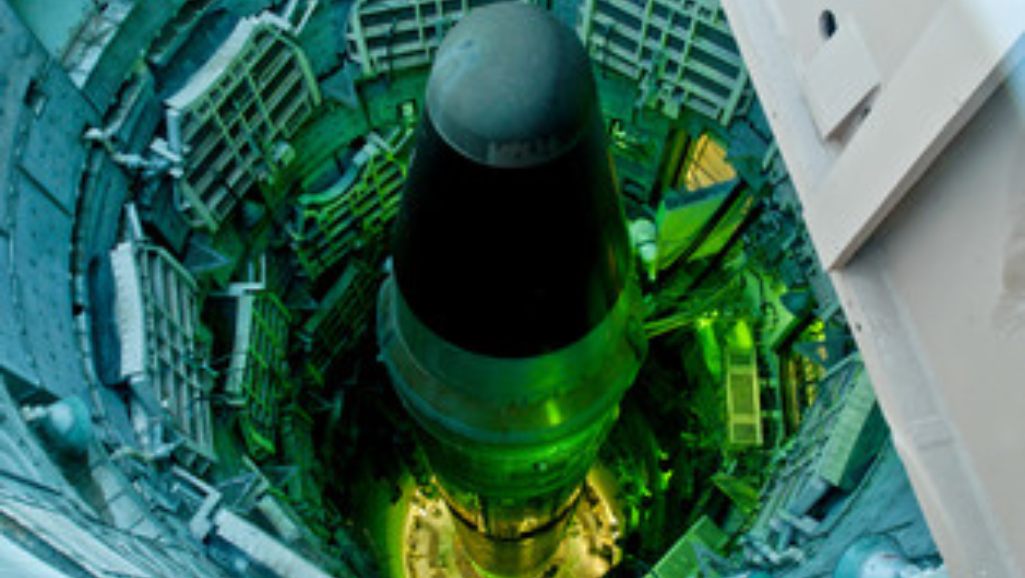In this article, you’ll explore a chilling example of nuclear terrorism and its far-reaching consequences. We’ll delve into the motivations behind such acts and examine the potential targets and impacts. Through the lens of the Aum Shinrikyo cult and the lessons learned from the Chernobyl disaster, we’ll shed light on the urgency for strengthening nuclear security. Join us as we unravel the complex web of international cooperation and current measures in place to combat this ever-present threat.
The Definition of Nuclear Terrorism
What is the specific definition of nuclear terrorism? Nuclear terrorism refers to the intentional use of nuclear materials or devices by non-state actors or individuals with the aim of causing widespread destruction, fear, and panic. It involves the deliberate targeting of nuclear facilities, transportation systems, or populated areas with the intent of causing mass casualties and instilling terror in society. The significance of this definition lies in the unique and devastating capabilities of nuclear weapons, which have the potential to cause immense loss of life, long-term environmental damage, and societal disruption.
The definition of nuclear terrorism encompasses the use of both nuclear weapons and radiological materials. Nuclear weapons are highly destructive devices that release an enormous amount of energy through nuclear reactions, resulting in a devastating explosion. On the other hand, radiological materials, such as radioactive isotopes, can be used to create a radiological dispersal device (RDD), also known as a “dirty bomb.” RDDs are designed to spread radioactive materials over a targeted area, causing contamination and fear.
The significance of understanding the definition of nuclear terrorism lies in the need to effectively combat this global threat. By clearly defining nuclear terrorism, governments and international organizations can develop strategies and policies to prevent the acquisition and use of nuclear materials by terrorists. It also enables the establishment of robust security measures to safeguard nuclear facilities and enhance the detection and interception of illicit nuclear activities. Overall, a clear and precise definition of nuclear terrorism is essential in ensuring the safety and security of nations and minimizing the potential catastrophic consequences of such acts.
Historical Background and Motivations
To understand the historical background and motivations behind nuclear terrorism, you should delve into the events and factors that have driven individuals and groups to pursue such actions. In the historical context, nuclear terrorism has emerged as a potential threat due to several key factors. The development and proliferation of nuclear technology have made it more accessible, increasing the risk of it falling into the wrong hands. Additionally, the rise of extremist ideologies and the radicalization of individuals have contributed to the motivation behind nuclear terrorism.
Terrorist tactics play a significant role in the historical background and motivations of nuclear terrorism. Terrorist organizations have strategically sought to exploit the destructive power of nuclear weapons to advance their political or ideological objectives. The potential for mass casualties and widespread disruption caused by a nuclear attack makes it an attractive tool for terrorists seeking to instill fear and exert influence on a global scale.
Moreover, historical incidents such as the attacks on Hiroshima and Nagasaki during World War II have demonstrated the devastating impact of nuclear weapons, further fueling the motivations for nuclear terrorism. The desire for revenge and the perception of nuclear weapons as symbols of power and prestige have also driven some individuals and groups to pursue nuclear terrorism.
Understanding the historical context and terrorist tactics is crucial in developing effective strategies to prevent and counter nuclear terrorism. By addressing the root causes and motivations behind these actions, policymakers and security agencies can work towards mitigating the risks and ensuring the safety of societies worldwide.
Potential Targets and Impacts
You should consider the potential targets and impacts of nuclear terrorism, as they are a crucial aspect to understanding the severity and implications of such attacks. The potential targets of nuclear terrorism can vary, ranging from densely populated cities to critical infrastructures and sensitive facilities. Highly populated urban areas are attractive targets due to the potential for significant casualties and widespread panic. Key economic centers, government buildings, and transportation hubs are also potential targets, as their destruction could cause significant disruption to society and the economy.
The impacts of nuclear terrorism are far-reaching and can have long-term consequences. The immediate impact of a nuclear attack includes the loss of human lives, injuries, and destruction of infrastructure. The detonation of a nuclear device can result in a massive release of radioactive materials, causing severe radiation sickness and long-term health effects for survivors. The environmental consequences are also significant, as radioactive fallout can contaminate large areas, rendering them uninhabitable for an extended period. The psychological impact on the affected population and the global community can be profound, leading to fear, mistrust, and potential political and social instability.
Understanding the potential targets and impacts of nuclear terrorism is essential for developing effective prevention and response strategies. By identifying vulnerable areas and implementing security measures, governments can reduce the likelihood of an attack. Additionally, planning for the aftermath and investing in disaster preparedness can mitigate the long-term consequences of a nuclear terrorist event.
The Case of the Aum Shinrikyo Cult
Now let’s examine the case of the Aum Shinrikyo cult and its relevance to the topic of nuclear terrorism. First, we will analyze the cult’s motives and ideology, which played a crucial role in shaping their actions. Next, we will delve into the attack methods employed by the cult, including their attempts to develop and deploy nuclear weapons. Finally, we will assess the societal impact and aftermath of their actions, highlighting the significant implications of this case for understanding the threat of nuclear terrorism.
Cult’s Motives and Ideology
When considering an example of nuclear terrorism, it is important to examine the motives and ideology of the Aum Shinrikyo cult. The cult’s recruitment strategies played a significant role in attracting followers. They targeted individuals who were disillusioned with society and offered them an alternative belief system that promised salvation and enlightenment. Through techniques such as mind control and manipulation, the cult was able to exert control over its members and enforce their obedience to the cult’s leader, Shoko Asahara. This allowed the cult to carry out acts of violence without resistance. Cult violence patterns were characterized by a willingness to use any means necessary to achieve their objectives, including the use of chemical weapons. The cult’s ideology, which combined elements of Buddhism, Hinduism, and apocalyptic thinking, justified their actions as necessary for the salvation of humanity. Understanding these motives and ideology is crucial in preventing future instances of nuclear terrorism.
Attack Methods Employed
Examining the attack methods employed by the Aum Shinrikyo cult sheds light on their use of violence and the potential for nuclear terrorism. The cult, led by Shoko Asahara, aimed to bring about a doomsday scenario through the use of unconventional weapons, including chemical and biological agents, as well as nuclear weapons. In their pursuit of nuclear terrorism, the cult attempted to manufacture and deploy a nuclear weapon. However, due to technical difficulties, they were unsuccessful in their attempts. The Aum Shinrikyo cult also employed other attack strategies, such as the use of nerve gas in the Tokyo subway attack in 1995. To prevent such acts of terrorism, it is crucial to enhance intelligence and surveillance capabilities, strengthen border security, and improve international cooperation in sharing information and implementing preventive measures.
Societal Impact and Aftermath
The societal impact and aftermath of the Aum Shinrikyo cult’s attempted nuclear terrorism can be seen in the heightened concern for intelligence and surveillance capabilities, strengthened border security, and improved international cooperation in preventing such acts of terrorism. The attack carried out by the cult in 1995, which involved releasing the deadly nerve agent sarin in the Tokyo subway system, caused widespread societal fear and psychological trauma. As a result, governments and security agencies worldwide recognized the urgent need to enhance their capabilities in order to detect and prevent future acts of nuclear terrorism. This incident served as a wake-up call, prompting countries to invest heavily in intelligence gathering, surveillance technologies, and border security measures. Additionally, international cooperation and information sharing between nations improved significantly to address the global threat posed by nuclear terrorism.
| Societal Impact | Aftermath |
|---|---|
| Heightened concern | Improved intelligence |
| Strengthened border security | Enhanced surveillance |
| Psychological trauma | International cooperation |
| Societal fear | Global threat prevention |
Lessons Learned From the Chernobyl Disaster
One important lesson to learn from the Chernobyl disaster is the significance of prompt and effective response measures. The accident at the Chernobyl Nuclear Power Plant in 1986 was a wake-up call for the world, highlighting the devastating consequences of a nuclear disaster and the need for robust safety protocols.
One of the key lessons learned from the Chernobyl disaster is the importance of proactive safety measures. Before the accident, there was a lack of adequate safety measures and protocols in place. This led to a series of errors and violations during the reactor test that ultimately resulted in a catastrophic explosion and the release of a large amount of radioactive material.
Another lesson learned from Chernobyl is the necessity of transparent and open communication during a nuclear crisis. In the aftermath of the accident, there was a delay in informing the public about the severity of the situation. This lack of transparency caused widespread panic and confusion, exacerbating the already dire situation.
Additionally, the Chernobyl disaster highlighted the need for international cooperation in addressing nuclear accidents. The response to the accident involved efforts from various countries, demonstrating the importance of sharing resources, expertise, and information to effectively mitigate the consequences of a nuclear disaster.
Current Measures and International Cooperation
To address the threat of nuclear terrorism, global security efforts must be strengthened by enhancing international cooperation and intelligence sharing. This involves establishing robust mechanisms for exchanging information and coordinating responses among nations. By working together, countries can better detect and prevent potential nuclear terrorist activities, ensuring the safety and security of the international community.
Strengthening Global Security Efforts
You can strengthen global security efforts and enhance international cooperation by implementing current measures. This can be achieved through various strategies such as increasing global cooperation and integrating technological advancements into security systems. By working together, countries can share intelligence, resources, and best practices to combat nuclear terrorism effectively. Additionally, technological advancements play a crucial role in improving security measures. For example, the development of advanced surveillance systems, biometric identification tools, and nuclear detection technologies can help detect and prevent potential threats. Furthermore, international organizations such as the United Nations and Interpol play a vital role in coordinating efforts, facilitating information exchange, and promoting collaboration among nations. Through these measures, we can create a more secure global environment and mitigate the risks associated with nuclear terrorism.
| Strategies for Strengthening Global Security | Benefits | Challenges |
|---|---|---|
| Increasing global cooperation | – Enhanced information sharing – Joint operations and exercises – Coordinated response to threats | – Differing national priorities – Political tensions – Language and cultural barriers |
| Integrating technological advancements | – Improved surveillance and detection capabilities – Enhanced border security – Efficient use of resources | – High costs of implementation – Rapid technological advancements – Cybersecurity risks |
| Strengthening international organizations | – Coordinated efforts and resources – Information exchange and analysis – Standardization of security protocols | – Varying levels of participation – Limited resources and funding – Political influence and decision-making |
Enhancing Intelligence Sharing
How can intelligence sharing be enhanced to strengthen international cooperation in preventing nuclear terrorism? Intelligence sharing plays a crucial role in preventing nuclear terrorism by providing timely and accurate information to detect and disrupt potential threats. To improve intelligence sharing, countries can establish robust mechanisms for information exchange, such as sharing databases, conducting joint training exercises, and establishing formal channels of communication. International cooperation is vital in this endeavor, as it allows countries to pool their resources and expertise to address common threats. Collaborative efforts, such as sharing intelligence reports, conducting joint investigations, and implementing coordinated counterterrorism strategies, can greatly enhance intelligence sharing. Additionally, the use of advanced technologies, like data analytics and artificial intelligence, can facilitate the collection, analysis, and dissemination of intelligence, further strengthening international cooperation in preventing nuclear terrorism.
The Urgency for Strengthening Nuclear Security
One critical step in addressing the threat of nuclear terrorism is to prioritize the strengthening of nuclear security measures. The role of technology and global collaboration cannot be overstated in this endeavor. By leveraging advanced technologies and working together on a global scale, countries can significantly enhance their ability to prevent, detect, and respond to potential nuclear security threats.
To illustrate the urgency for strengthening nuclear security, consider the following table:
| Challenges | Consequences | Solutions | Benefits |
|---|---|---|---|
| Nuclear smuggling | Acquisition of nuclear materials by | Enhanced border controls and cooperation | Prevent illicit trafficking of |
| terrorist groups | between countries | nuclear materials | |
| Cyber threats | Hacking into nuclear facilities to | Strengthening cybersecurity measures | Safeguard critical systems |
| gain access to sensitive information | |||
| Insider threats | Unauthorized access or actions | Implementing strict access controls and | Minimize the risk of insider |
| by individuals within nuclear | background checks | threats | |
| facilities |


